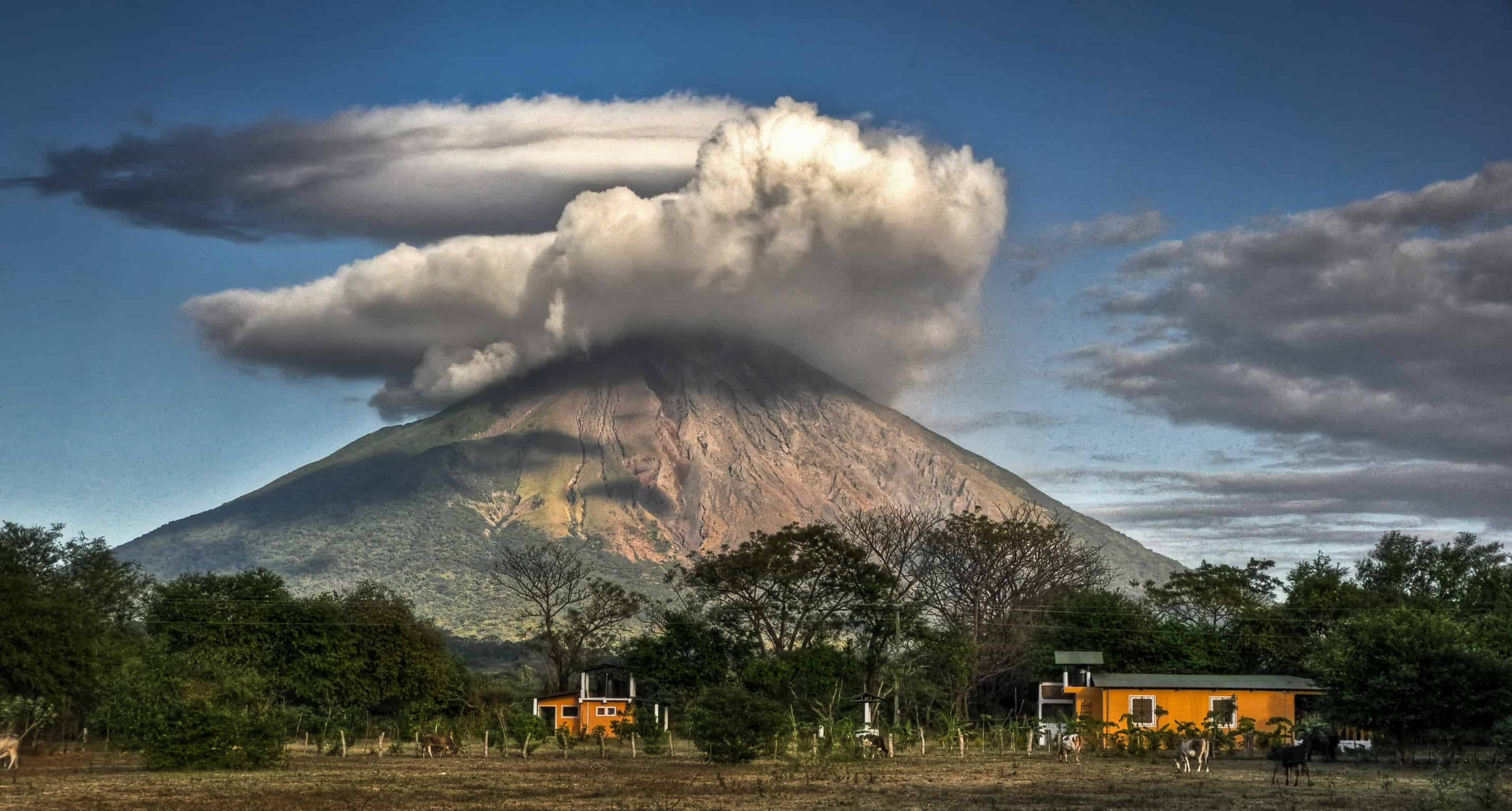The Republic of Nicaragua borders Honduras and Costa Rica in the Central American isthmus. The fertile ground and temperate climate of the region makes it an ideal spot for civilizations and the area has been inhabited for more than 2500 years. As old cultures were replaced with new, the past became buried and preserved in the ground. Ongoing digs are slowly uncovering the rich history left over the centuries, telling the stories of civilizations long dead.
Part of one the most dramatic finds in Nicaragua is no longer in the country, but has been taken to two U.S. museums. The Ancient Footprints of Acahualinca are fossilized human tracks left in the mud some 2000 years ago. Specimens are in the Peabody Museum of Archeology at Harvard and the U.S. National Museum.
León Viejo
 https://www.flickr.com/photos/svengaarn/
https://www.flickr.com/photos/svengaarn/
Subtiava was a peaceful place until the Spanish arrived in the 1500s and destroyed most of the structures. León Viejo was built on the site and was subjected to a number of disasters from the nearby Momotombo volcano. Earthquakes in 1594 and 1610 helped to finish the city entirely.
Initial digs found pottery and other ceramics and more recent excavations have uncovered what appears to be a smithy. As more exploratory trenches are dug, bits of ceramic, metal, porcelain and humans are uncovered, adding to the story. A fragment of what seems to be a flute carved from a human humerus was found among prehispanic fragments and likely belonged to a shaman of old. A number of funerary burials found in the cathedral are exciting in that they are below the remains interred by the Spaniards and are positioned in such a way to suggest that the burials were ceremonial or perhaps even a tribute to the volcano.
Ometepe
 https://www.flickr.com/photos/21954708@N04/
https://www.flickr.com/photos/21954708@N04/
The island of Ometepe is the largest volcanic island within a lake and has been inhabited since 1500 BC. In addition to two large cities, the island has a lot of prehispanic petroglyphs, pottery and statues, suggesting that this was another ceremonial centre for the local people. Many of the statues are now on display in the Managua National Museum and the Park of Altagracia Church. Like those found at Zapatera, the statues are carved of basalt and seem to be done in the same style.
Funerary urns uncovered in several places are large enough to hold a small adult although they may have been buried by lava at one point and several appeared empty or had only a few bones. Beads, pottery and other vessels have also been uncovered.
Ometepe is the best-documented archeological site in the country and many of the significant findings have been sent to museums in the U.S. and Nicaragua.
Zapatera
A volcanic island in the northern region of Lake Nicaragua, isla Zapatera was a ceremonial centre of the Chorotega people sometime between 800 and 1350 AD. As far back as 1850 the island was known to be uninhabited and may never have been where people normally lived.
Statues and petroglyphs have been found in several regions and subsequently removed and placed in a museum for protection. The statues are remarkable – carved from black basalt and ranging between one and two and a quarter metres in height. The statues depict humans and animals and may represent high-status community members or even gods. They are normally found surrounding a mound and facing outwards, suggesting that they had a purpose – perhaps representing deities at ceremonial sacrifices.
Aguas Buena
 https://www.flickr.com/photos/citysnidget/
https://www.flickr.com/photos/citysnidget/
Close to 300 mounds were found at Aguas Buenas in the 1980s and subsequent dating suggests that they were created between 400 and 1600 AD. Artifacts within the site come from all over the region showing that the site was accessible to many travellers who left their mark on the land. Continued excavations have uncovered additional mounds, bringing the total to more than 500.
The curious circular patterns of the mounds puzzle archeologists and are unlike any other ancient system found in Nicaragua. The research is still in the early stages and an international project team from the Netherlands, Nicaragua, Canada and the U.S. is actively excavating mounds to discover what’s inside them.
El Cascal de Flor de Pino
One of the most recently discovered sites, the settlement was discovered accidently while clearing the area for construction. Fortunately the tree cutter recognized the historical significance of the mounds he found and called in archeologists to investigate. What they have discovered are the remains of a poorly-understood civilization that existed before the Mayan empire took over.
Three pyramid-platforms surrounding a plaza are the best preserved and although the design is similar to those constructed by the Mayan, these are built of earth and rubble, not just stone. Smaller settlements surround the area but the excavations are proceeding slowly and more won’t be known for some time.


